The Chihuahua is a small breed of dog that typically weighs between 2 and 6 pounds. They are known for their large ears, expressive eyes, and lively personalities. This breed originated in Mexico and has become a popular companion animal all over the world. Chihuahuas have a lifespan of 14-16 years and require regular exercise, socialization, and training to thrive as pets. Let’s dive into an in-depth discussion of a Chihuahua’s progression.
Chihuahua Growth and Weight Chart by Age
| Age | Height | Weight |
|---|---|---|
| Birth | Varies | 2.5 to 5.5 ounces |
| 1 Month | 2-3 inches | 7-21 ounces |
| 2 Months | 2-4 inches | 11-33 ounces |
| 3 Months | 2.5-4.5 inches | 15-45 ounces |
| 4 Months | 3-5 inches | 20-59 ounces |
| 5 Months | 4-5.5 inches | 24-70 ounces |
| 6 Months | 4.5-6 inches | 27-80 ounces |
| 7-10 Months | 5-7 inches | 40-96 ounces |
| 12+ Months | 6-10 inches | 40-112 ounces |
When Will My Chihuahua Stop Growing?
As a Chihuahua owner, it’s important to understand when your furry friend will stop growing. Typically, Chihuahuas reach their full size between 9-12 months of age.
In addition to understanding the timeline for growth, it’s also crucial to pay attention to your dog’s diet and hydration needs during this time. On average, a Chihuahua should consume 5-10 ounces of food per day, depending on activity level. Additionally, they should have access to fresh water at all times.
To ensure that your pup is growing at a healthy rate and staying on track with its developmental milestones, regular check-ups with a veterinarian are essential. It’s recommended that you take your Chihuahua for wellness visits every six months during their first year of life and then annually after that.
During these check-ups, vets will assess everything from weight gain and dental health to vaccinations and overall behavior. They may also provide additional guidance on nutrition or training if needed.
By keeping track of your Chihuahua’s growth progression through regular vet visits and providing proper care, including nutritious meals and plenty of water intake, you’ll help set them up for success as happy, healthy adult dogs!
How Big Will My Chihuahua Be When Fully Grown?
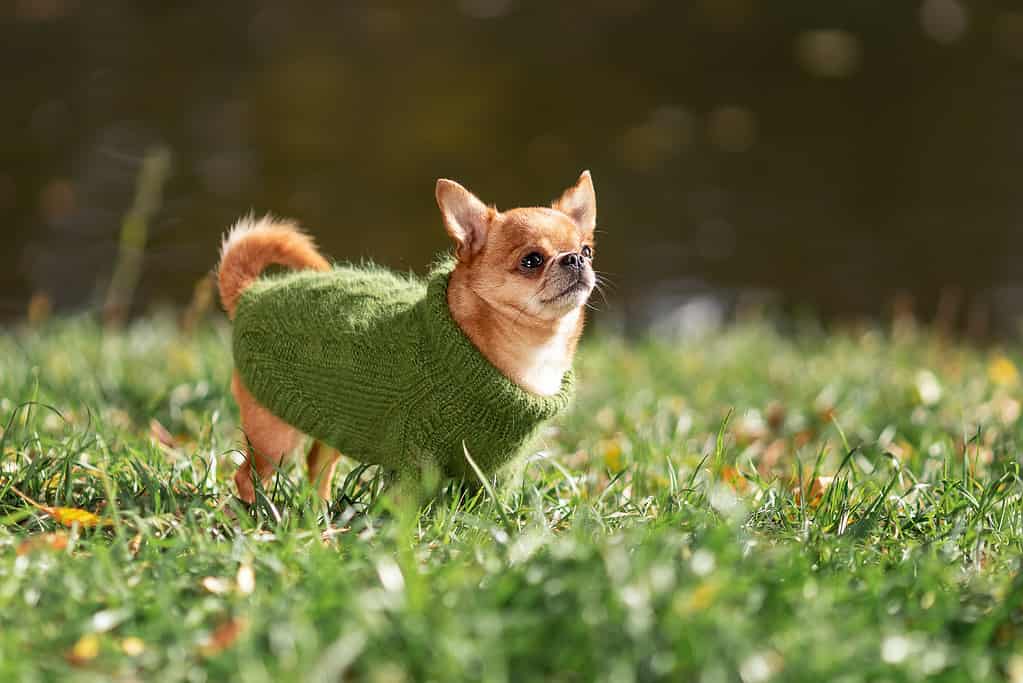
Chihuahuas weigh around 6 pounds on average.
©iStock.com/Irina Nedikova
One of the most common questions that new Chihuahua owners ask is, “How big will my Chihuahua be when fully grown?” While it’s impossible to predict the exact height and weight of a Chihuahua with 100% accuracy, there are some general guidelines that can help you estimate their size.
Chihuahuas are considered a toy breed and typically weigh between 2-6 pounds when fully grown. However, there is some variation within this range depending on factors such as genetics and diet. In terms of height, adult Chihuahuas usually stand between 6-9 inches tall at the shoulder.
The Biggest Chihuahua Ever Recorded
There are no official records for the biggest Chihuahua. However, in 2017, there was a reality television show that followed a Chihuahua mix named Gracie, who weighed 41.5 pounds. Her owner, Lisa, allowed her to eat whenever she wanted and rarely exercised her. The trainer helped Gracie reduce her body weight by 30%, and he wanted to help pet owners find new ways to connect with their pets and add years to their lives.
A Chihuahua named Cleatus from Florida was diagnosed with an underactive thyroid, similar to humans. This caused Cleatus to experience an imbalance of hormones and inexplicable weight gain, eventually reaching 33.5 lbs before the vet could get the condition under control with medication.
An article by a Texas news site mentioned another large Chihuahua, Milo, who weighs 28 lbs and stands 1 foot tall. This compares to the usually smaller size of 5-8 inches and under 6 lbs of the average Chihuahua.
When Should My Chihuahua Be Spayed or Neutered?

Chihuahuas are usually spayed or neutered around six months of age.
©iStock.com/lilu13
Spaying or neutering your Chihuahua is an important decision that should be made with careful consideration. While there are differing opinions on when the ideal time to spay or neuter a Chihuahua may be, it is generally recommended to wait until they have reached sexual maturity at around six months of age. This not only allows for proper physical development but also reduces the risk of certain health issues later in life, such as mammary tumors and prostate problems.
It is important to discuss this decision with your veterinarian, who can provide personalized recommendations based on your individual dog’s health and lifestyle factors. Additionally, it is worth noting that spaying/neutering can have behavioral effects, such as reducing aggression and marking behaviors, which may also factor into your decision-making process.
When Should My Chihuahua Be Housebroken?
Housebreaking your Chihuahua is an important milestone in their development that requires patience, consistency, and positive reinforcement. While every dog is different and may have varying levels of success with house training, the general timeline for a Chihuahua to be fully housebroken is typically between four to six months old.
However, it’s important to keep in mind that accidents can still happen even after they’ve been successfully trained. To help speed up the process, establish a regular feeding schedule and take them outside frequently throughout the day – especially after meals or naps. Positive reinforcement through treats and praise can also encourage good behavior and reinforce successful potty training habits. Remember that persistence pays off when it comes to housebreaking your furry friend!
When Should My Chihuahua Stop Eating Puppy Food?
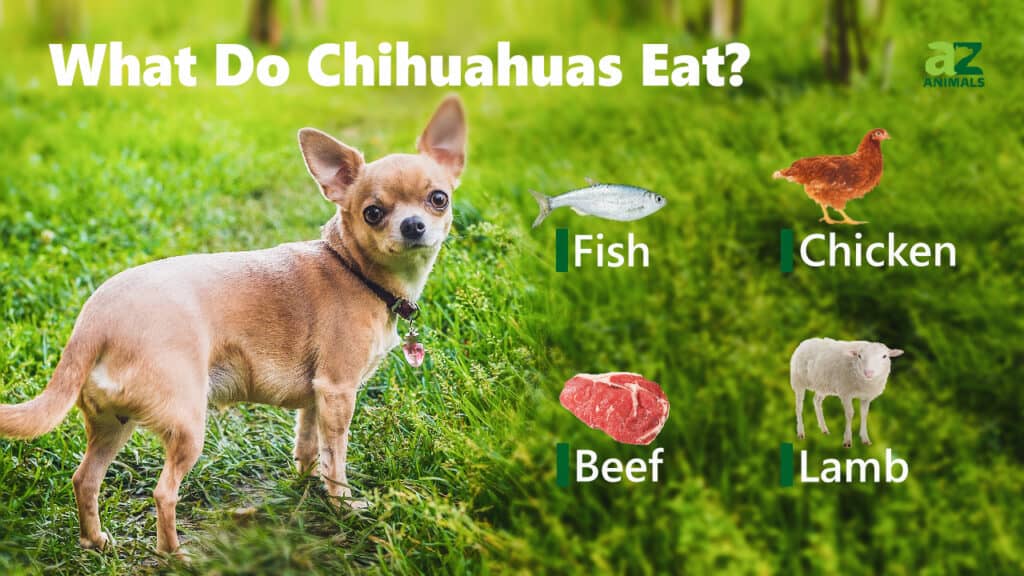
As a Chihuahua owner, it’s important to know when your furry friend should transition from puppy food to adult dog food. Typically, Chihuahuas reach their full adult size by the time they are 10-12 months old and can start eating adult dog food at this point. However, it’s always best to consult with your veterinarian before making any changes to your pet’s diet.
Puppy food is formulated with higher levels of protein and fat than adult dog food in order to support growth and development. Once your Chihuahua reaches adulthood, too much protein and fat can lead to obesity or other health issues such as pancreatitis.
When transitioning from puppy food to adult dog food, do so gradually over the course of about a week or more. Mix increasing amounts of the new adult formula into the puppy formula until you have fully switched over.
Overall, paying attention to nutrition is critical for ensuring that your Chihuahua leads a healthy life well into its golden years!
When Will My Chihuahua Start Losing Teeth?
As a Chihuahua owner, it’s important to keep track of your pup’s growth and development to ensure they are healthy and happy. One milestone that you should look out for is when your Chihuahua starts losing their baby teeth. Unlike humans, dogs do not have any baby molars. Instead, they have deciduous teeth that start to fall out at around 12 weeks old.
This process is completely normal and usually occurs without any issues or discomfort for the dog. As the deciduous teeth start falling out, the permanent teeth begin to erupt in their place. By around six months of age, all of a Chihuahua’s permanent teeth should have fully emerged from their gums.
It’s essential during this time to monitor your Chihuahua’s oral health closely as they adjust to having adult teeth. You may notice some bleeding or tenderness as new teeth emerge, but this should resolve quickly on its own. This is a great time to provide chew toys and frozen treats to ease this transition.
When Should I Start Training My Chihuahua?
Training your Chihuahua should start as soon as you bring them home. It is important to establish rules and boundaries from the beginning in order to prevent bad habits from forming. At a young age, puppies are like sponges and can quickly learn basic commands such as sit, stay, come, and down. Positive reinforcement techniques such as treats or praise can be used to encourage good behavior.
It is also important to socialize your Chihuahua early on so that they become comfortable around people and other animals. This can be done by taking them for walks, introducing them to new environments, and allowing them to interact with other dogs in a controlled setting.
As your Chihuahua grows older, their training should become more advanced. They may benefit from obedience classes or specialized training if they have behavioral issues such as excessive barking or aggression towards other dogs.
Overall, starting training early and consistently reinforcing positive behavior will set your Chihuahua up for success both at home and out in the world.
What Cues Should I Teach My Chihuahua First?

Chihuahua dogs are fun to train.
©PITAKSUNTI/Shutterstock.com
Teaching your Chihuahua basic cues is an essential part of their development. By starting with simple commands, you can establish a foundation for more advanced training later on. The first cue to teach your Chihuahua should be their name. This may seem obvious, but it’s important that they recognize and respond to their own name before moving on to other commands.
Once your Chihuahua knows their name, the next cue to teach them is “sit.” This is a fundamental behavior that will come in handy throughout their life. To teach this cue, hold a treat above your dog’s head and slowly move it back toward its tail while saying, “Sit.” As soon as they sit down, give them the treat and praise them.
Another important cue to teach your Chihuahua is “Come.” This command can be used in emergency situations or when you need to get your dog’s attention quickly. Start by calling out your dog’s name, followed by “come” in a happy tone of voice. When they come over to you, reward them with treats and praise.
In addition to these basic cues, it’s also helpful to train your Chihuahua on how to walk on a leash and stay in place (either sitting or lying down). With consistent practice and positive reinforcement techniques such as treats or verbal encouragement, these behaviors will become second nature for both you and your furry friend.
When Will My Chihuahua Calm Down?
As a Chihuahua owner, you may be wondering when your furry friend will finally calm down. It’s important to understand that every dog is unique, and their behavior can vary based on factors such as breed, age, personality, and environment. Most Chihuahuas start to settle after 12 months of age.
Typically, they reach their full maturity at around two years old. However, this doesn’t necessarily mean they will magically become calmer overnight. Training and socialization play a big role in shaping your dog’s behavior.
To help your Chihuahua calm down, it’s important to establish consistent routines and boundaries from the beginning. Make sure they have plenty of exercise and mental stimulation throughout the day to prevent boredom-induced misbehavior.
Additionally, positive reinforcement training techniques can go a long way in teaching your pet how to behave appropriately in various situations. Patience and consistency are key when it comes to training any dog.
Common Health Issues Your Chihuahua Might Experience
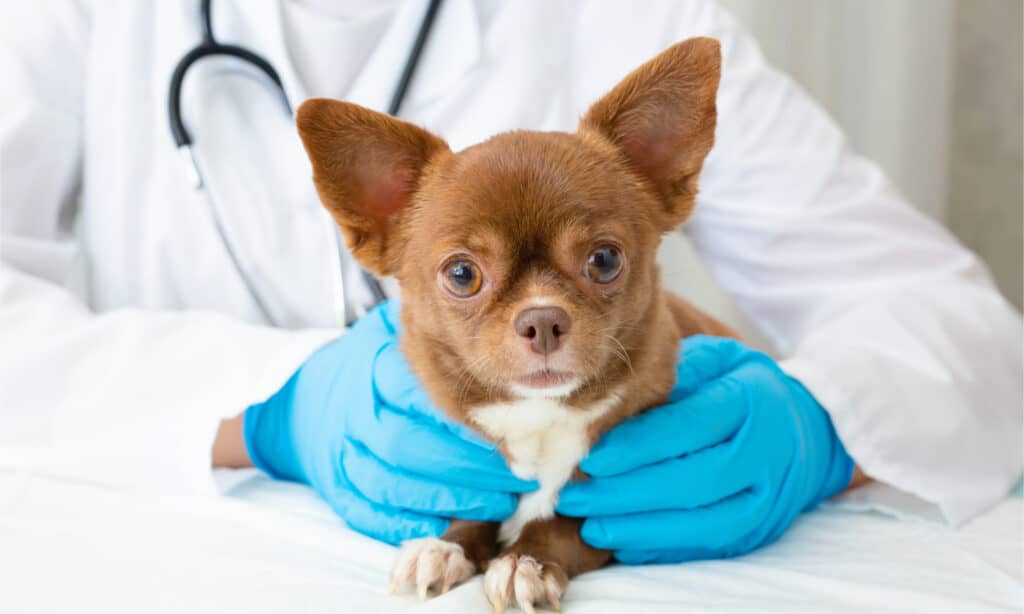
Your veterinarian can rule out any medical issues for your Chihuahua.
©OLESYA BOLTENKOVA/Shutterstock.com
As a Chihuahua owner, it is important to be aware of the common health issues that your furry friend might experience. One such issue is dental problems. Due to their small size, Chihuahuas are prone to tooth decay and gum disease. Regular brushing and dental check-ups with your vet can help prevent these issues.
Another issue is hypoglycemia or low blood sugar levels. This is especially common in young puppies and can lead to seizures or even death if not treated promptly. Feeding your Chihuahua small meals throughout the day and keeping them warm can help prevent this condition.
Patellar luxation, where the kneecap dislocates from its normal position, is also a common issue in Chihuahuas. This may require surgery to correct, and owners should watch for limping or difficulty walking.
Lastly, some Chihuahuas may suffer from collapsing trachea, which causes coughing fits and difficulty breathing. Keeping your dog at a healthy weight can help alleviate symptoms, while medication may be necessary for more severe cases.
By being aware of these potential health issues, you can take proactive steps as an owner to keep your furry friend happy and healthy!
Pictures of Chihuahuas as Puppies
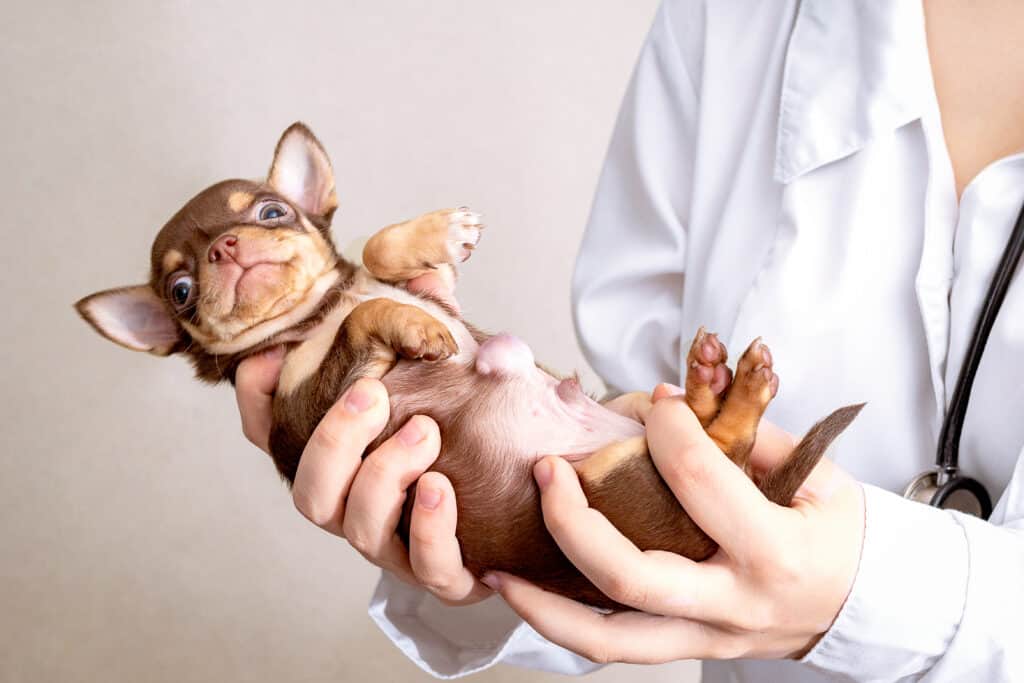
A chihuahua puppy is maybe the cutest animal on earth!
©Lara Ezhkova/Shutterstock.com

Puppy chihuahuas respond well to training and socialization.
©boyphare/Shutterstock.com
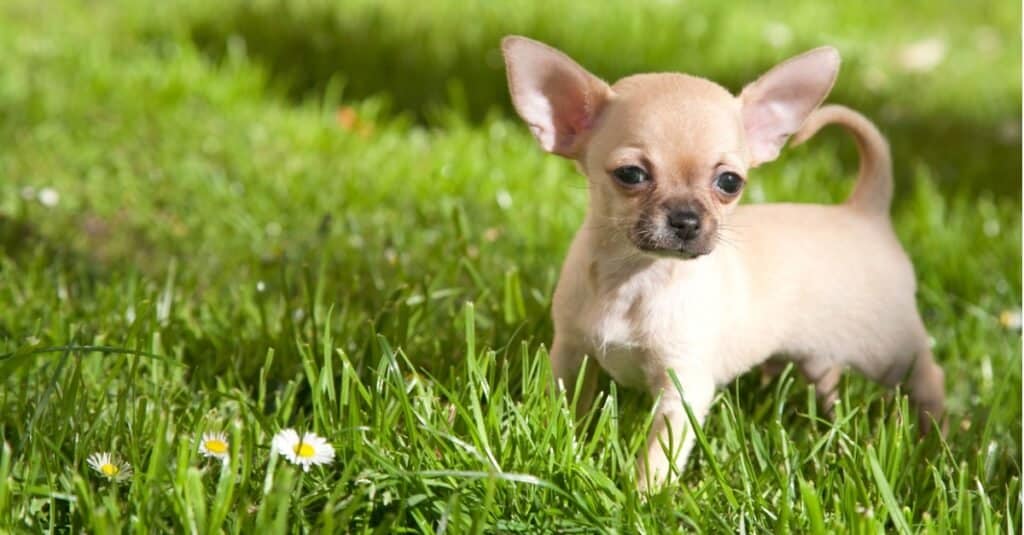
Tiny, curious, and devoted, the Chihuahua is a very charismatic breed.
©iStock.com/Coica
Pictures of Fully Grown Chihuahuas
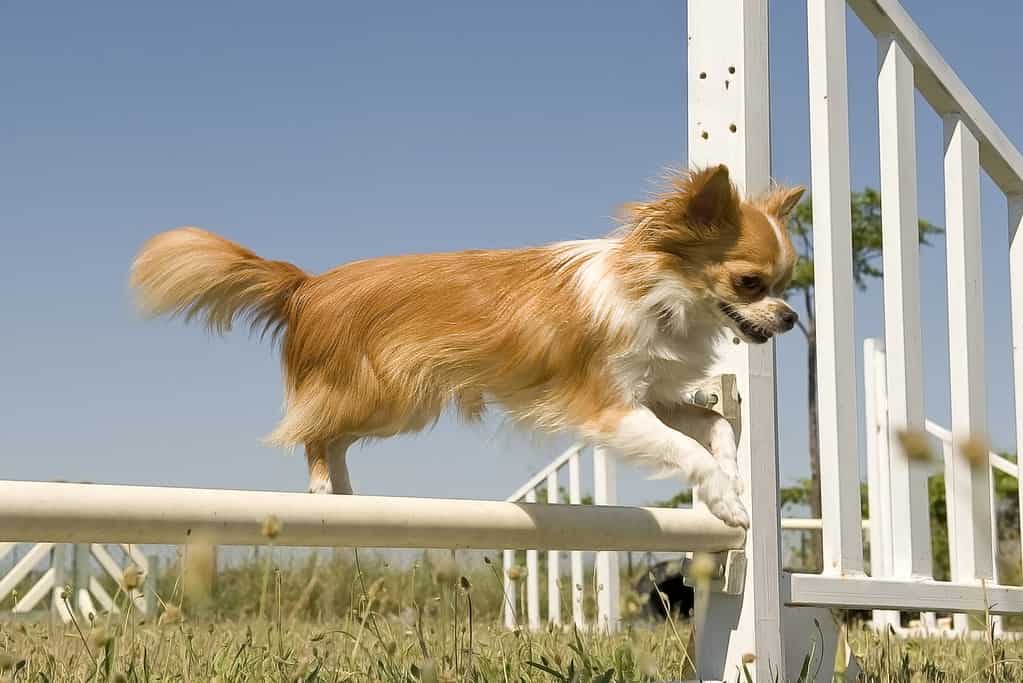
Chihuahuas love agility courses!
©iStock.com/cynoclub
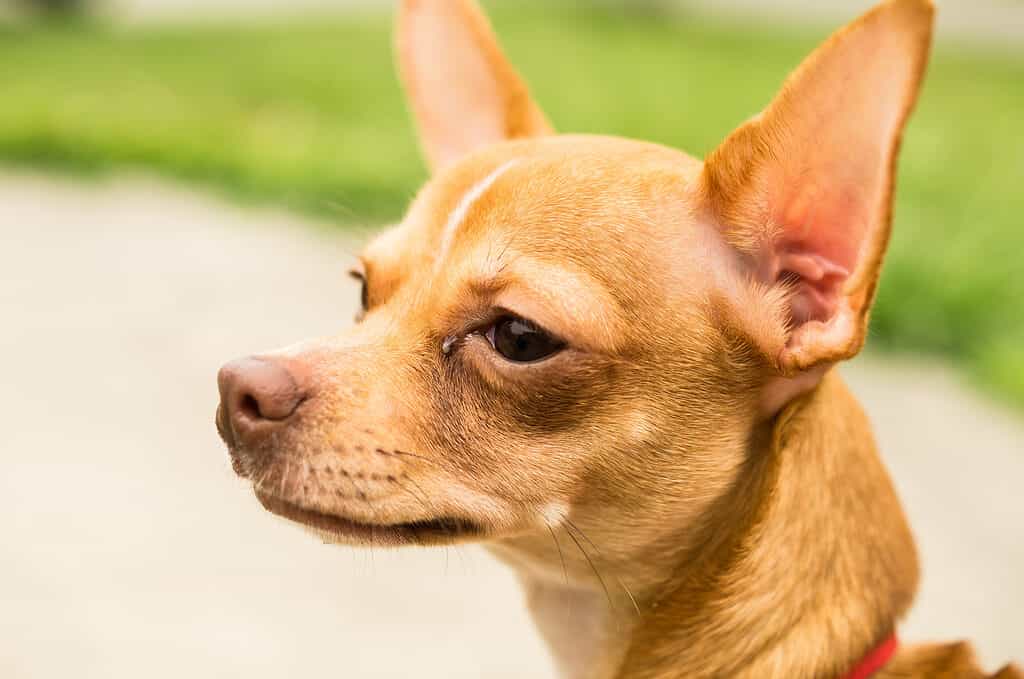
©Toro_The_Bull – Arturelia/Shutterstock.com
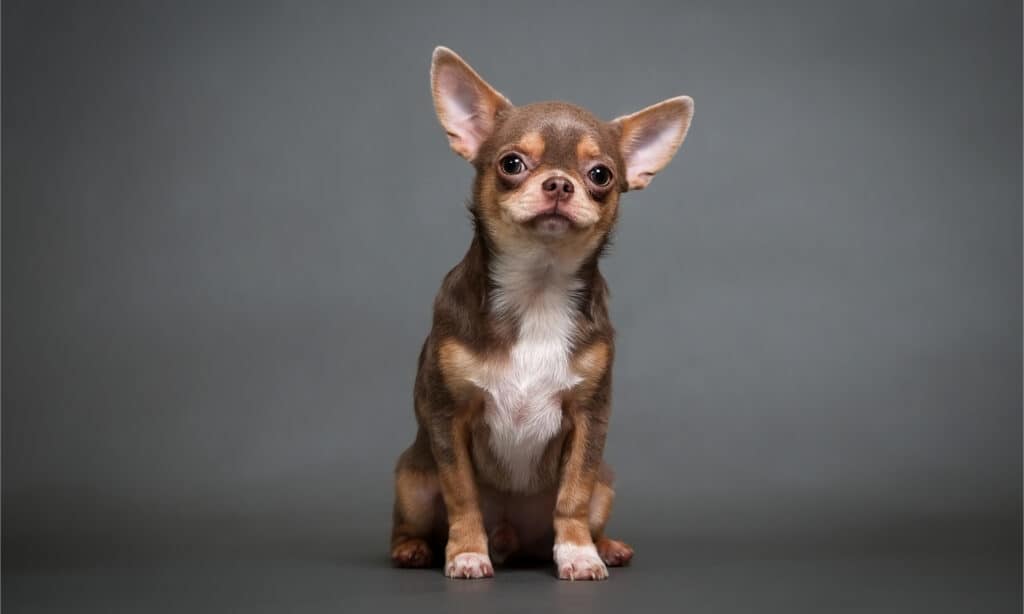
Chihuahuas don’t shed as much as some other, more popular breeds!
©Al_Er/Shutterstock.com
The photo featured at the top of this post is © Jan Dix/Shutterstock.com
Ready to discover the top 10 cutest dog breeds in the entire world?
How about the fastest dogs, the largest dogs and those that are -- quite frankly -- just the kindest dogs on the planet? Each day, AZ Animals sends out lists just like this to our thousands of email subscribers. And the best part? It's FREE. Join today by entering your email below.
Thank you for reading! Have some feedback for us? Contact the AZ Animals editorial team.






